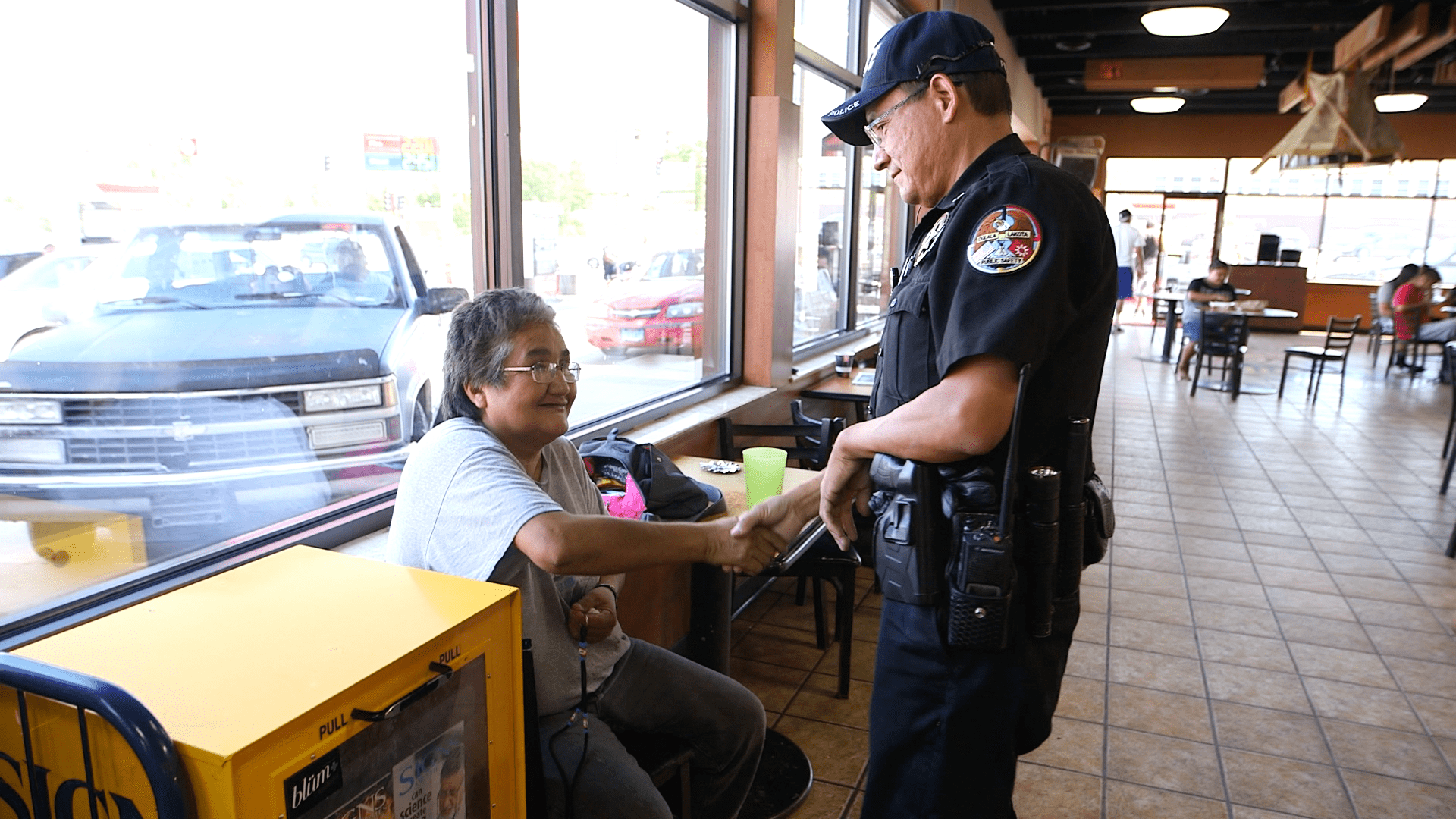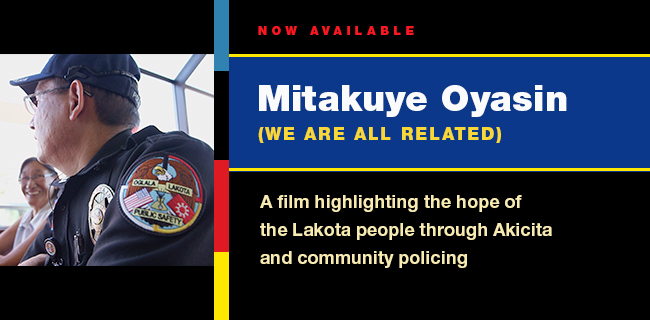Contact Us
To provide feedback on the Community Policing Dispatch, e-mail the editorial board at CPDispatch@usdoj.gov.
To obtain details on COPS Office programs, publications, and resources, contact the COPS Office Response Center at 800-421-6770 or AskCopsRC@usdoj.gov

U.S. Department of Justice
Office of Community Oriented Policing Services
Washington, DC 20530
Like many communities, the Pine Ridge Indian Reservation in South Dakota is struggling with crime, alcohol and drug abuse, violence, and numerous other public safety issues. However, the issues in Pine Ridge are magnified by extreme poverty, unemployment levels exceeding 95 percent, poor health, a high number of suicides, and other community factors. The Oglala Sioux Tribe Department of Public Safety (OSTDPS), a department unable to recruit and retain enough officers to fill its 44 authorized positions, has been challenged by these issues and by the limited resources available in providing police services to an estimated 29,000 people on the 3.1 million acre reservation; a land mass larger than Delaware and Rhode Island combined. In 2015 alone, OSTDPS responded to 120,000 calls for service, 85 percent of which were alcohol related. Response times often exceed 1 hour due to the sheer size of the reservation, lack of physical addresses for homes, and the limited number of officers, which is often less than half of the number of authorized positions. At any given time, there is usually one officer on a shift, and back up can be a half an hour to an hour away.
In addressing the challenges facing the Lakota people on the Pine Ridge Indian Reservation, the Oglala Sioux Tribe has turned to Akicita; a community-based approach to public safety that has been a part of the Lakota people for centuries. Throughout Lakota history, the Akicita Society consisted of a band of tribal men that roamed through the camps issuing justice and caring for the community. An Akacita position came with great respect and great responsibility, and was a lifetime commitment. The Akicita are the guardians; the protectors of the people.

Akicita is an intrinsic part of the Pine Ridge community and a shared responsibility among all community members. It builds on the natural laws surrounding the Lakota people. “It takes a lot of the natural management styles that you would learn from herds, from movements of herds, from leadership in herds,” said Monica Terkildsen of OSTDPS. “It’s intrinsic. It’s what helped guide us a long time ago and helped us define our roles as community members and how we would move and flow with the environment.” For the Lakota people there is hope for the future in remembering the past.
Taking all of these factors into account, the OSTDPS and the Tribal Council decided that they needed to reintroduce the concept of Akicita to the people of the Oglala Sioux nation. The concept had fallen by the wayside and the tribal leaders wanted to reinvigorate the community, to protect one another, and to step in when appropriate by providing guidance, mentorship, and kindness.
In other words, Akicita is community policing: policing that “promotes organizational strategies that support the systematic use of partnerships and problem-solving techniques to proactively address the immediate conditions that give rise to public safety issues such as crime, social disorder, and fear of crime.” Community policing underscores the importance of everyone in a community having a stake in public safety. Akicita also stresses the importance of the community stepping up and protecting one another and their communities. By reintroducing the Akicita concept, the OSTDPS hopes to have community members actively participating in life on the reservation while ensuring the safety of everyone.
The OSTDPS worked in partnership with the U.S. Department of Justice Office of Community Oriented Policing Services (COPS Office) and the Virginia Center for Policing Innovation (VCPI) to develop a seven-minute film, called Mitakuye Oyasin, to help reintroduce the Akicita concept to its people. This film depicts the historical context and its application to both modern day life on the reservation and the forward-thinking public safety vision. The intention of the film is to evoke a sense of pride and public responsibility in both the community and the tribal law enforcement personnel. In addition, the film explores the intersection with community policing. Mitakuye Oyasin has the potential to be used in a multitude of ways—including as a recruitment tool, in community mobilization, and in youth programs— to instill a sense of community policing, responsibility, and pride.
The development of this film was made possible through the COPS Office Critical Response Initiative, a targeted on-site assistance for law enforcement agencies dealing with incidents, events, or sensitive issues. Through the Critical Response Initiative, the COPS Office’s initial focus was addressing the impact of youth suicides occurring on the reservation on the officers and the community; however, it quickly became evident that the needs of the OSTDPS extended beyond this one area of concern. Altogether, the COPS Office and VCPI provided officer safety, trauma, and wellness training and peer-to-peer exchanges, in addition to facilitating the development of the Mitakuye Oyasin film.

To see other Critical Response efforts, please visit https://cops.usdoj.gov/criticalresponse.
To view the film, please visit https://cops.usdoj.gov/Default.asp?Item=2468.
Nazmia E.A. Comrie
Site Manager/Senior Program Specialist, COPS Office
Lynda S. O’Connell
Executive Director, Virginia Center for Policing Innovation
Subscribe to Email Updates
To sign up for monthly updates or to access your subscriber preferences, please enter your email address in the Subscribe box.






